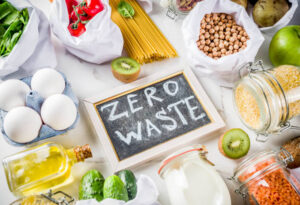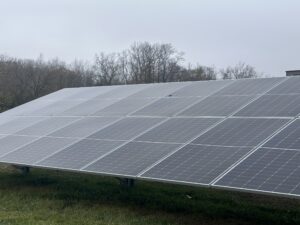Vibratory Finishing Process Is Now Greener

When you are in the manufacturing and finishing business, you should always ensure that the process you follow is an environmentally friendly one.
Turning the process into an eco-friendly one, is as important as the final quality of the finished parts.
The vibratory finishing process is one of the most popular methods used by most manufacturers for mass finishing different parts.
You can make the vibratory finishing process eco-friendly, by choosing the right materials, machines, and processes.
1. Waste Water Treatment
The vibratory process involves the use of a vibratory finishing machine that consumes water as one of the main ingredients when it comes to wet polishing.
When the finishing process is complete, the water used will be full of debris such as scraped material (from the parts) along with polishing and finishing compounds.
There are many ways to reuse this water again in the wet tumbling process in vibratory finishing.

Wastewater treatment facility.
However, the water usage can be reduced without affecting the finish quality of your parts if you treat the water properly before the next use.
Using Flocculant Compounds
Flocculant compounds are used to treat the waste water.
Flocculant compounds help to group the scraped material pieces, polishing compounds, and oil together into large flocks.
Using the flocculant compounds, makes it easy to separate the waste materials from the leftover water after the vibratory finishing process.
The effluent filtered water can be subjected to further filtration using centrifugal methods to get good quality reusable water.
This water will be reused again for wet polishing inside the vibratory tumbling machine.
The amount of waste materials is also reduced to a minimum.
You can also bring down the cost of operation if you no longer need to pay for the water used.
You must test and validate that the final recycled water is fit to use for tumbling.
Otherwise, it may oxidize or damage the parts during the polishing process.
Recycling Wastewater
It is easy to recycle the water if only one compound is involved in the polishing process.
If more than one compound is used, then it may be tougher to get a good quality of the recycled water.
You must also test and verify that the recycled water doesn’t contain any salts.
Salts can affect the finish quality of the part.
If you are planning to add green technology to your finishing and manufacturing business, then recycling the wastewater is the first step in the process.
2. Reusable Media Option
When it comes to choosing the media, you should always look for reusable ones.
If you have multiple reusable options, choose one that has a longer lifespan, and can do the job.
Reusable tumbling media include: stainless steel media, plastic media, ceramic media, and Zirconia balls.

Reusable tumbling media used in the finishing process.
The life of each of these media will be different.
If you manage and store the media properly, then you can use it for many more cycles.
Stainless steel media is known to have a very long lifespan amongst these media.
Investing in high quality media ensures that you can use it many more times.
Inovatec Machinery manufactures some of the best quality tumbling media on the market today.
Through quality techniques imposed by the company it guarantees the raw material selection and manufacturing process of the media.
The Zirconia media, which is famous for its features like extremely low wear and tear rate, resistance to corrosion, and heat, helps customers to reuse it many times.
If you invest in a slightly bigger media size, you can reuse it for a much longer period of time compared to the smaller ones.
Investing in bigger media is a cost effective solution that increases the lifespan of the media and reduces waste.
3. Environmentally Friendly Tumbling Media Options
Organic media is considered environmentally friendly.
Corn cob granules and walnut grit are two organic media that are considered eco-friendly.
These are primarily used as the drying agent in a vibratory finishing process.
They are non-toxic and biodegradable media.

Corn cob and walnut grit media.
If you are currently using silica media, you can replace it with walnut grit.
Silica media is known to cause breathing problems.
Walnut shells ensure dust free finishing of parts.
The life of these organic media is shorter compared to the inorganic media, and this is the only drawback of the organic media.
4. Noise Reduction Options
The vibratory finishing process is known to make lots of noise when the machine is in operation.
The noise is caused due to the vibratory motion of the tumbler.
There are various methods to suppress the noise and create a noise free working environment.

Sound cover for vibratory finsihing machine.
The acoustic sound cover is one of the options to reduce noise pollution.
The sound cover can bring down the noise level from 95 dB to 75 dB.
A less noisy environment is safer and healthier for workers.
5. Auto Compound System
If you ensure the mixture of water and compounds in the correct ratio, you can ensure the unnecessary wastage of water.
The prominent dosing pump will help you maintain the correct water to compound ratio.
As a result, you can make the process more efficient as well as environmentally friendly.
6. Eco-friendly Polishing Paste Options
Polishing pastes are used to get that extra shine on the part surface.
There are many eco-friendly polishing paste options available on the market.
However, if you are planning to invest in a polishing paste, ensure that you select one that is friendly with the environment.
You have to ensure that the bi-products and the waste resulting after the finishing process are not hazardous materials.
Conclusion
Choosing environmentally friendly options over the others, you can make the vibratory finishing process a green one.
This will also help in creating an efficient waste management system in the manufacturing industry.
You can adopt all these techniques to make your vibratory finishing process eco-friendly.
Reduce, reuse and recycle to make the finishing process friendly with the environment.







